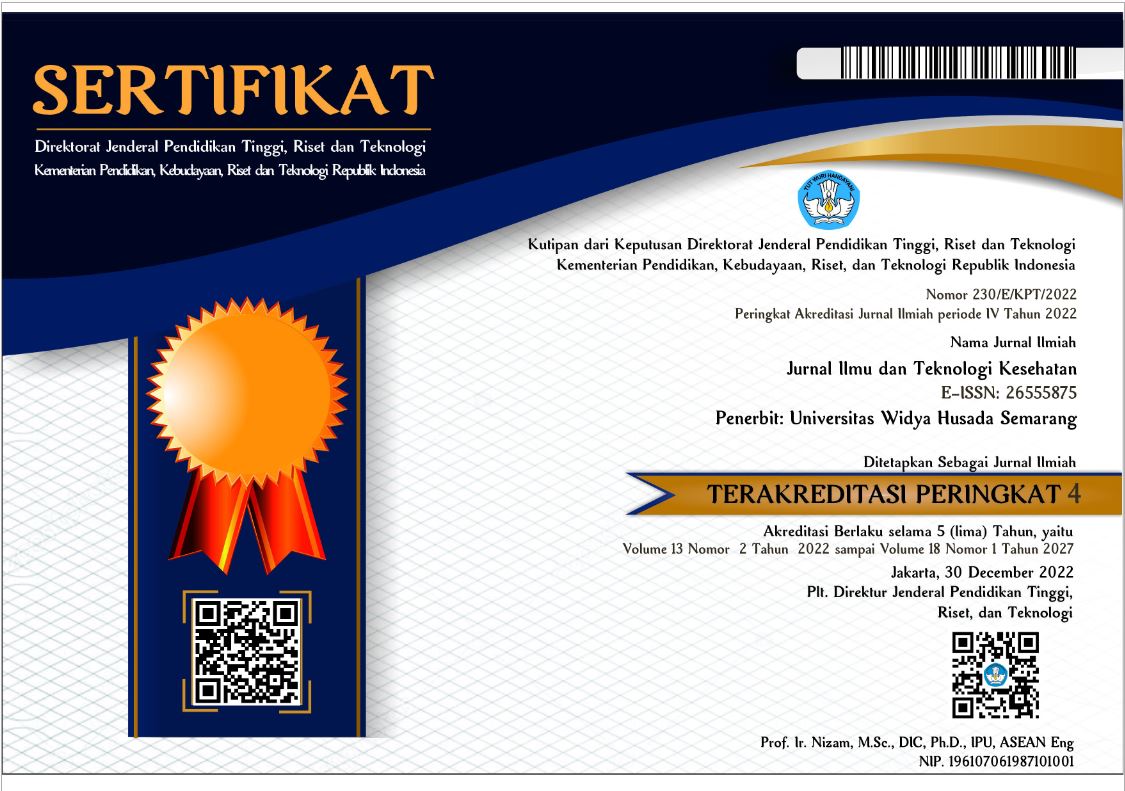Anatomical Information of Slice Thickness Variation in Ischemic Stroke with CT Scan
Abstract
Keywords
Full Text:
PDFReferences
Baert, AL, 2009, “Multislice CT”, Springer Heidelberg Dordrecht, London.
Baert, AL, 2011, “Comparative Interpretation of CT and Standard Radiography of The Chest”, Springer Heidelberg Dordrecht, London.
Bontrager, Kenneth L. 2001. Textbook of Radiographic Positioning and Related Anatomy. USA: Mosby.
Bontrager, Kenneth L. 2018. Textbook of Radiographic Positioning and Related Anatomy. USA: Mosby.
Bushong, Steward. 2001. Radiologic Science for Technologists. Seventh Edition. United State of America : A Harcourt Healt Sciences Company.
Bushberg J.T. The essential physics of medical imaging, Philadelphia, second edition, Lippincot Williams and Wilkins;2022
Elsevier: Inc. Missoouri.Kenneth L. Bontrager, J. p. (2018). Texbook of Radiographic Positioning and Related Anatomy Ninth Edition. USA : Eiselver
Feigin, et al., (2021). Global, regional and national burden of stroke and its risk factors, 1990-2019: A systematic analysis for the global burden of disease study 2019. Lancet Neurol., 20 (10), pp. 795-820
Feigin, et al., (2022). World stroke organization (WSO): global stroke fact sheet 2022: Int.J.Stroke,17 (1), pp. 18-29
Henwood, Suzanne (ISBN...1999). Clinical CT: Techniques and Practice
Hsieh, H.-F., & Shannon, S. E. (2005). Three approaches to qualitative content analysis. Qualitative Health Research, 15(9), 1277–1288.
Loho, Mohammad Arswendo, T. 2Elvie, & Ali, R. H. K. (2014). Overview of Head CT Scan Results in Patients with Clinical Non-Hemorrhagic Stroke in the Radiology Department of FK. UNSRAT / SMF Radiology BLU RSUP Prof. DR. R. D Kandou Manado Period January 2011- December 2011 1Mohammad.
Mair, G., Boyd, E. V., Chapell, F. M., Von Kummer, R., Lindley, R., Sanderock, O., &Wardlaw, J. M (2015). Sensitivity and specificity of the hyperdense artery sign fot arterial obstruction in acute ischemic stroke. Stroke, 46(1), 102-107.https://doi.org/10.1161/STROKEAHA.114.007036
Makmur, I. W. A., Setiabudi, W., & Anam, C. (2013). Evaluation of Slice Thickness on Single Slice CT-Scan Aircraft. Journal of Science and Mathematics, 21(2), 42-47.
Moore, K. L., & Dalley, A. F. (2018). Clinically oriented anatomy. Wolters kluwer india Pvt Ltd.
Tomura, N., Uemura, K., Inugrani,A., Fujita, H., Higano, S., & Shishido,F.1988 Early CT finding in cerebral infarcts: Obscuration of the lentiform nucleus. Radiology 168:46
YushkevichP.A.et.al,.(2006). User guided 3D active Contour Segmentation of Anatomical Structures: Significantly Improved Efficiency and Reability.
DOI: https://doi.org/10.33666/jitk.v16i2.680
Refbacks
- There are currently no refbacks.

This work is licensed under a Creative Commons Attribution 4.0 International License.
| Published by : Widya Husada Semarang University | ISSN : 2086-8510 (Print) | ISSN : 2655-5875 (Online) | |
| INDEXED BY | |||
 |  |  |  |
| MAP LOCATION | |||






